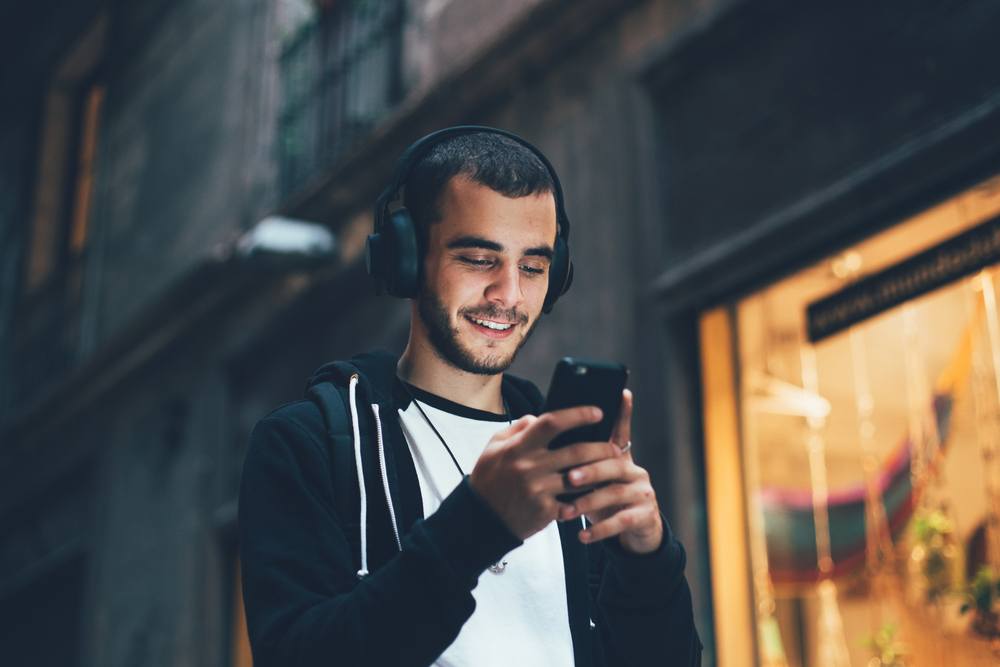Meet James, a passionate music lover who perfectly integrates Spotify into his work regimen, switches over to Pandora during his workouts, and curates playlists for every occasion conceivable, from cardio programs to cooking and even gaming. He’s seldom observed without his headphones, which have become an integral part of his daily life, turning every moment into an individualized audio adventure. James takes comfort and delight in the captivating realm of music, but the very source of his happiness may be harming his treasured ability to hear without him recognizing it.
Regarding our ears, there are both safe and hazardous ways to indulge in music. Sadly, many of us tend to gravitate towards the latter.
What is the connection between prolonged exposure to music and hearing damage?
As time pass, loud noises can lead to degeneration of your hearing abilities. We’re used to thinking of hearing loss as an issue related to aging, but more and more research reveals that it’s really the accumulation of noise-related damage that is the concern here and not anything inherent in the process of aging.
Younger people are more prone to noise-induced harm as their ears are still in the developmental stage. And yet, young adults are more likely to be dismissive of the permanent dangers of high volume. So there’s an epidemic of younger individuals with hearing loss, thanks, in part, to rampant high-volume headphone use.
Is it possible to enjoy music safely?
Unrestricted max volume is obviously the” dangerous” way to listen to music. There is a way to listen to music more safely, which typically means lowering the volume. The suggested safe volume levels are usually as follows:
- For Adults: No more than 40 hours of listening on a device, and keep the volume below 80 dB.
- For Teens and Minors: You can still listen for 40 hours, but keep the volume level lower than 75 dB.
Breaking it down, you’re looking at about 5 hours and 40 minutes of listening each day. That seems like a lot, but it can go by fairly quickly. Even still, most people have a pretty solid concept of keeping track of time– it’s something we’re trained to do effectively from a very young age.
The more difficult aspect involves tracking your sound level. Devices like smartphones, computers, and TVs typically do not display volume in decibels. It’s gauged on some random scale. Maybe it’s 1-100. But maybe it’s 1-16. You may be unaware of the maximum volume range of your device or how near you are to reaching that limit.
Tips for efficiently keeping track of your music volume
Numerous free noise monitoring apps can be found for both iPhone and Android devices to address this issue. These apps provide real-time insights into ambient noise levels, equipping users to adjust their music volume appropriately.
That’s why most hearing specialists recommend the use of one of many free noise tracking apps. These extensively accessible apps, compatible with both iOS and Android platforms, provide instant sound-level feedback on the ambient noise around you. In this manner, you can monitor the decibel level of your music as it plays and make adjustments as necessary.
A volume comparison: garbage disposals and more
As illustration, 80 dB is roughly comparable to the noise produced by a common garbage disposal or dishwasher– audible, yet not excessively loud. Acknowledging this standard is crucial, as it represents the limit beyond which hearing damage becomes a tangible hazard.
It’s crucial to exercise heightened caution when noise levels surpass this critical point. Think about decreasing your exposure to extremely loud music by listening to specific songs at the highest volume rather than listening to entire albums.
Prolonged exposure to loud sounds can result in hearing issues, including ringing in the ears, or tinnitus, and potentially irreversible damage to one’s hearing. By remaining aware of when our ears venture into the danger zone, we enable ourselves to make educated decisions, with the ultimate goal of fostering safer listening practices.
Schedule a hearing test
To further prioritize your hearing health, think about reaching out to a hearing specialist to schedule a comprehensive hearing exam. Taking practical actions like regular assessments can identify possible issues at an early stage, enabling prompt actions and tailored advice to protect your valuable hearing.
